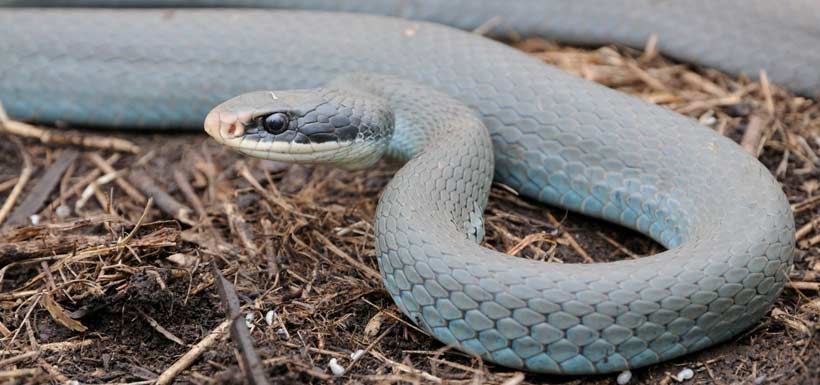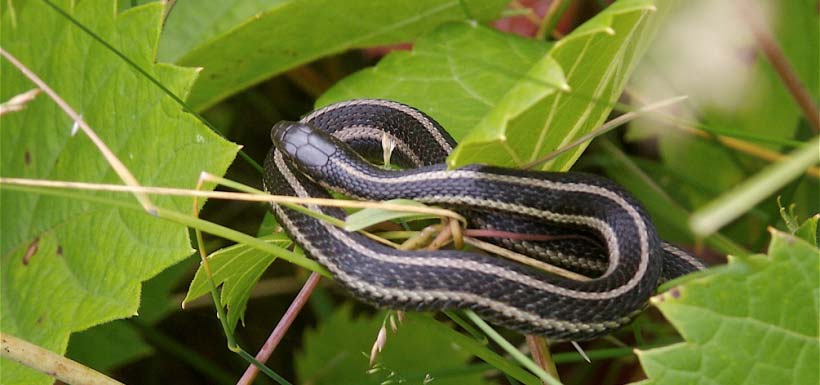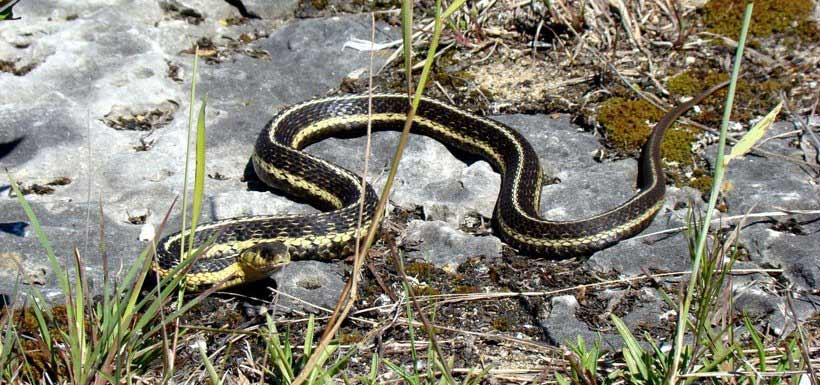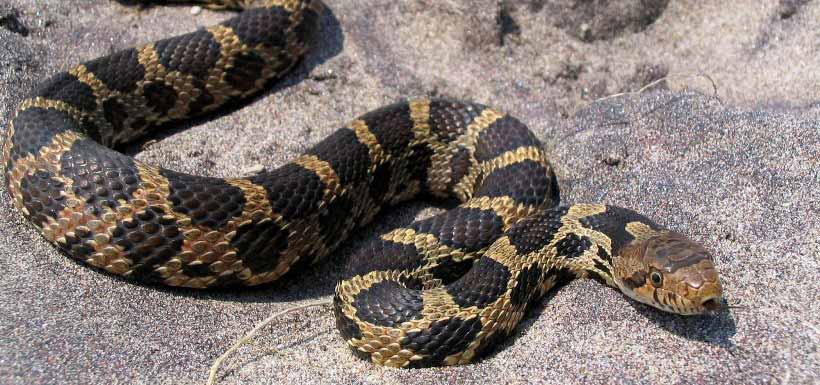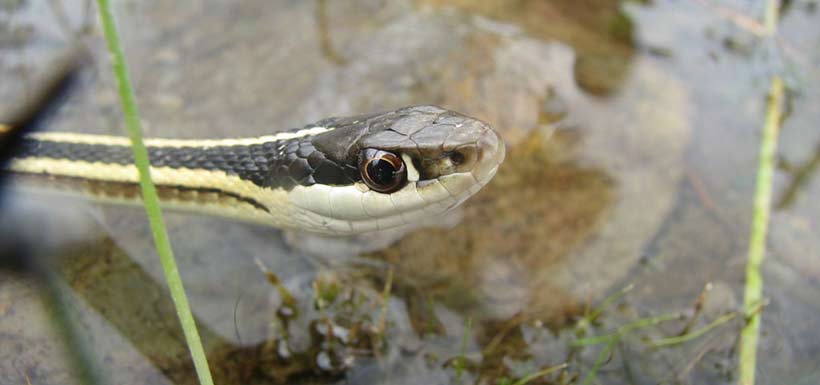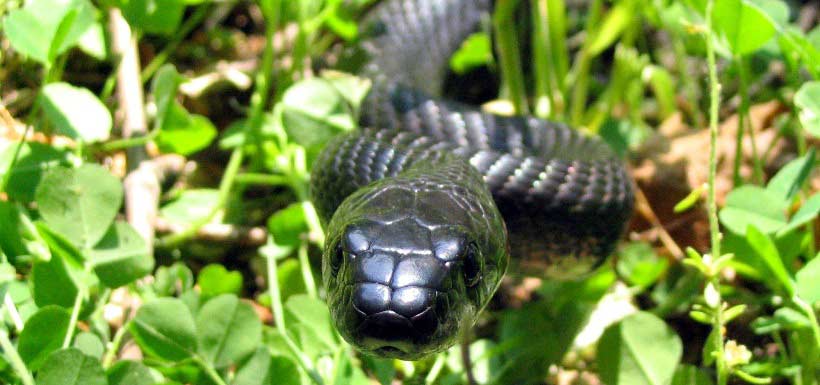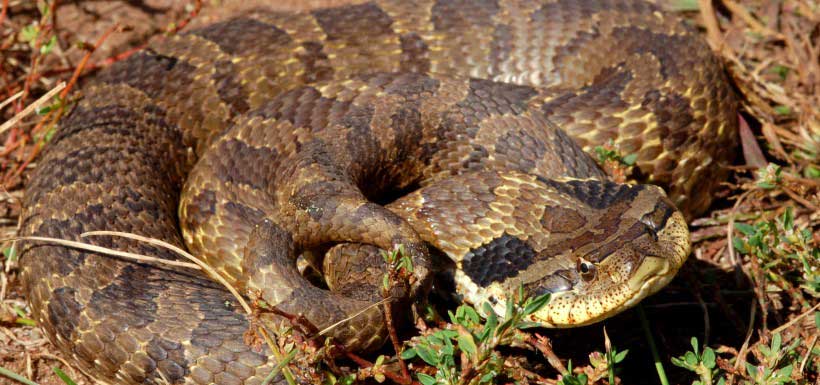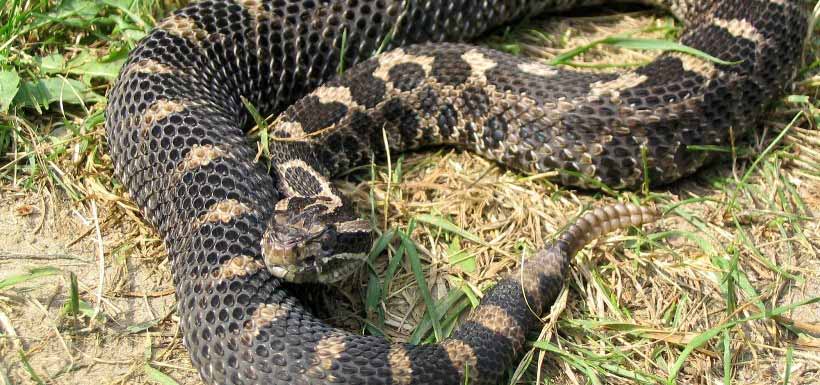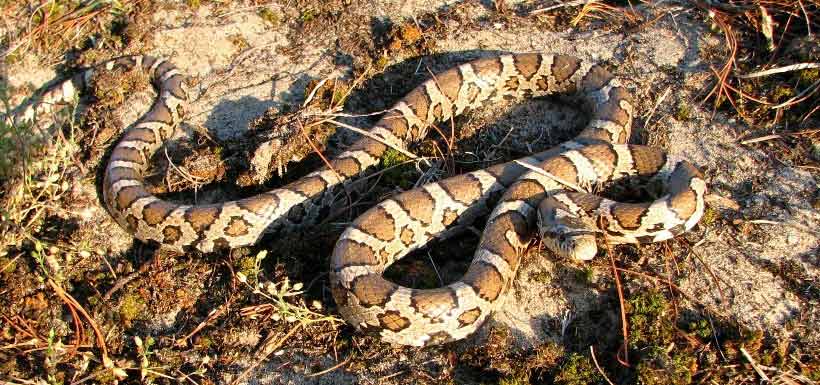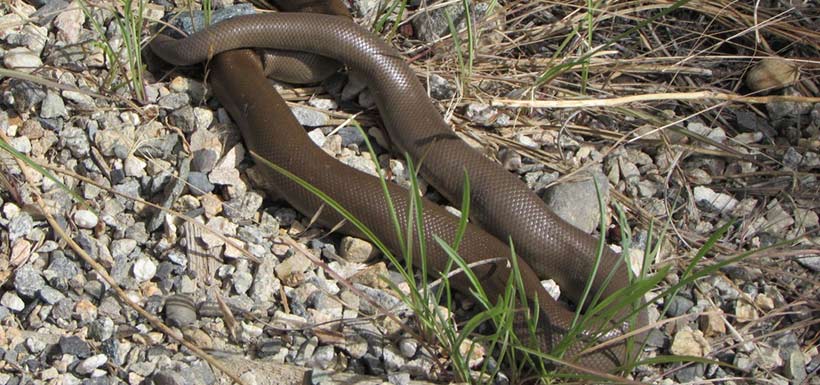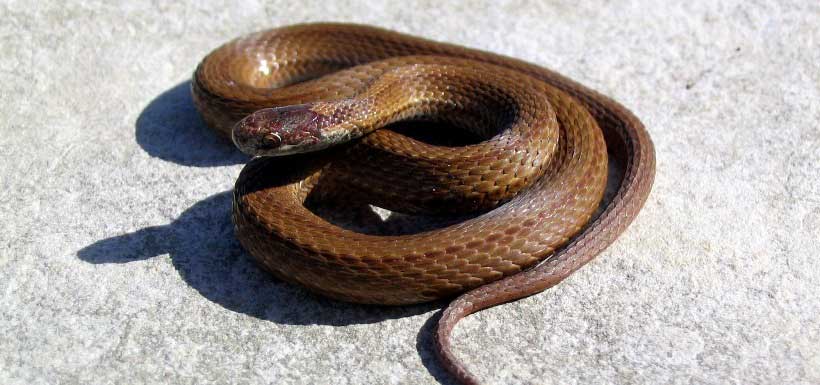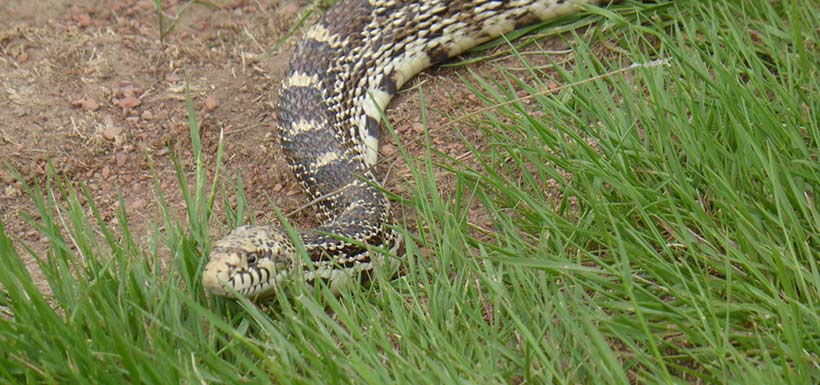15 fun facts about Canadian snakes
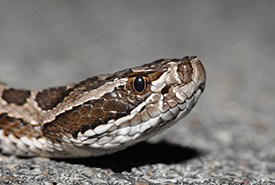
Massasauga rattlesnake (Photo by Aaron Goodwin)
Whether you're a snake savant or a citizen scientist, it's the time of year that our slithery friends are out and about. Here are some interesting tidbits about our native snake species to share with your friends:
- In Canada, the blue racer snake is currently only found on Pelee Island.
- The eastern hog-nosed snake plays dead when threatened by writhing around, rolling over and sticking out its tongue.
- Red-back salamanders are the northern ring-necked snake’s favourite meal.
- Though it vibrates its tail when threatened, eastern milksnake is actually a constrictor.
- The smooth greensnake is excellent at camouflaging itself among shrubs and grasses.
- Eastern foxsnakes can both climb trees and swim.
- The common gartersnake is the most widely distributed reptile in Canada.
- The harmless eastern hog-nosed snake mimics cobras and rattlesnakes to ward off threats.
- Gray ratsnake is Canada’s largest species of snake.
- The queen snake is aquatic and non-venomous, and at maturity can reach lengths of 60-90 centimetres.
- Massasauga rattlesnake, Ontario’s only venomous snake, is shy and docile, and avoids human contact whenever possible.
- The eastern foxsnake is globally rare, existing only around the Great Lakes basin in southern Ontario, Michigan and Ohio.
-
The Atlantic population of eastern ribbonsnake in Nova Scotia is separated by more than 700 kilometres from other populations.
- Bullsnake uses communal dens and nesting sites.
- BC’s northern rubber boa is one of only two species of the boa family living outside the tropics and subtropics.

